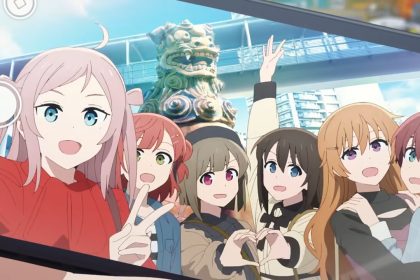Dragon Ball and Journey to the West are two iconic tales that have captivated audiences around the world. While they come from different mediums and cultural backgrounds, there are striking similarities between the two. Both stories feature epic adventures, larger-than-life characters, and themes of self-discovery and personal growth. In this article, we will explore the similarities between Dragon Ball and Journey to the West, delving into their origins, character journeys, mythical creatures, martial arts influences, quests, humor, moral lessons, and cultural impact.
Origins and Influences
Journey to the West, also known as Monkey, is a Chinese novel written in the 16th century by Wu Cheng’en. It is based on the historical figure Xuanzang, a Buddhist monk who traveled to India to obtain Buddhist scriptures. The novel combines history, mythology, and folklore, and has become one of the Four Great Classical Novels of Chinese literature.
Dragon Ball, created by Akira Toriyama, is a Japanese manga series that was serialized from 1984 to 1995. It follows the adventures of Son Goku, a young martial artist with a monkey tail, as he trains and battles his way through various challenges. Toriyama drew inspiration from Journey to the West, incorporating elements such as the monkey-like appearance and mischievous nature of the protagonist.
Protagonists and their Journeys
Both Dragon Ball and Journey to the West feature protagonists who embark on epic journeys filled with adventure and self-discovery. In Journey to the West, the main character is Sun Wukong, also known as the Monkey King. He is a mischievous and powerful monkey born from a stone. Sun Wukong accompanies Xuanzang on his journey to India, protecting him from demons and supernatural beings.
In Dragon Ball, the protagonist is Son Goku, an innocent and naive yet incredibly strong martial artist. Goku embarks on a quest to find the seven Dragon Balls, which can grant any wish. Along the way, he faces powerful enemies, forms friendships, and grows stronger through training and battles. Both Sun Wukong and Son Goku evolve from impulsive and carefree individuals into wise and heroic figures, learning important life lessons along their journeys.
Mythical Creatures and Martial Arts, Two Distinctive Features of Dragon Ball and Journey to The West
Both Dragon Ball and Journey to the West are rich in mythical creatures and monsters. Journey to the West features a wide array of fantastical beings, including demons, gods, and spirits. Sun Wukong himself possesses extraordinary powers and can transform into various shapes and sizes. Similarly, Dragon Ball introduces a vast array of fantastical creatures, aliens, and powerful adversaries. The series showcases the battles and power-ups of its characters, highlighting their extraordinary martial arts abilities.
Furthermore, both Dragon Ball and Journey to the West draw heavily from Chinese martial arts traditions. Journey to the West incorporates elements of martial arts and showcases Sun Wukong’s prowess in combat. Similarly, Dragon Ball is renowned for its dynamic fight scenes and the intricate martial arts techniques employed by its characters. The influence of Chinese martial arts is evident in the fluid and acrobatic movements displayed throughout the series.
Quests and Challenges, Dragon Ball and Journey to The West
Both Dragon Ball and Journey to the West are structured around quests and challenges that the protagonists must overcome. In Journey to the West, Xuanzang’s quest is to retrieve the Buddhist scriptures from India. Along the way, he and his companions face numerous trials, including battles with demons and temptations that test their resolve and faith.
Similarly, Dragon Ball follows Goku’s quest to collect the seven Dragon Balls. Throughout his journey, Goku encounters powerful foes, participates in martial arts tournaments, and trains relentlessly tobecome stronger. Each challenge pushes Goku to his limits and helps him unlock new levels of power and mastery.
Humor and Adventure
Both Dragon Ball and Journey to the West incorporate humor and adventure into their narratives. Journey to the West is known for its comedic elements, often using satire and wit to highlight human follies and societal norms. Sun Wukong’s mischievous nature and humorous antics provide comic relief throughout the story.
Likewise, Dragon Ball balances intense action with lighthearted humor. The series is filled with comedic moments, often stemming from Goku’s childlike innocence and his interactions with other characters. The humor adds levity to the story and enhances the overall enjoyment of the adventure.
Moral Lessons and Buddhist Philosophy
Journey to the West draws heavily from Buddhist philosophy and imparts moral lessons to its readers. The novel explores themes of redemption, enlightenment, and the journey towards self-improvement. Through the trials and tribulations faced by its characters, Journey to the West conveys the importance of compassion, perseverance, and the pursuit of spiritual enlightenment.
Similarly, Dragon Ball incorporates moral lessons and teachings inspired by Buddhist philosophy. The series explores themes of friendship, loyalty, and the consequences of one’s actions. It emphasizes the value of personal growth, overcoming adversity, and the power of self-belief.
Popularity and Cultural Impact of Both Stories
Dragon Ball has achieved immense popularity and has become a global phenomenon. The series has spawned numerous adaptations, including anime, films, video games, and merchandise. Its impact on popular culture is undeniable, influencing subsequent generations of manga and anime creators.
Journey to the West, too, has left a lasting legacy on popular culture, not only in China but also worldwide. It has been adapted into various forms, including stage plays, television series, and films. The Monkey King character has become an iconic figure in Chinese folklore and has been featured in numerous works of literature and media.
Dragon Ball and Journey to The West, Two Great Stories
In conclusion, Dragon Ball and Journey to the West share remarkable similarities in their storytelling, character development, mythical elements, and cultural impact. Both tales have captivated audiences with their epic journeys, memorable characters, and moral teachings. Whether it’s the mischievous Sun Wukong or the adventurous Son Goku, these stories continue to resonate with readers and viewers around the world. Their enduring popularity is a testament to the timeless appeal of tales that inspire us to embark on our own heroic quests and discover our true potential.













